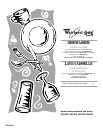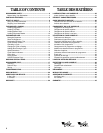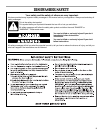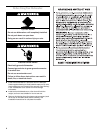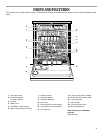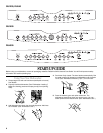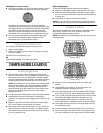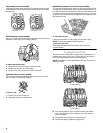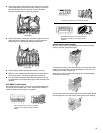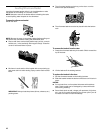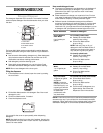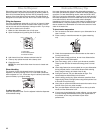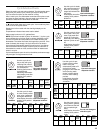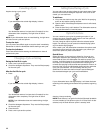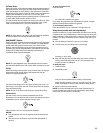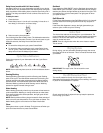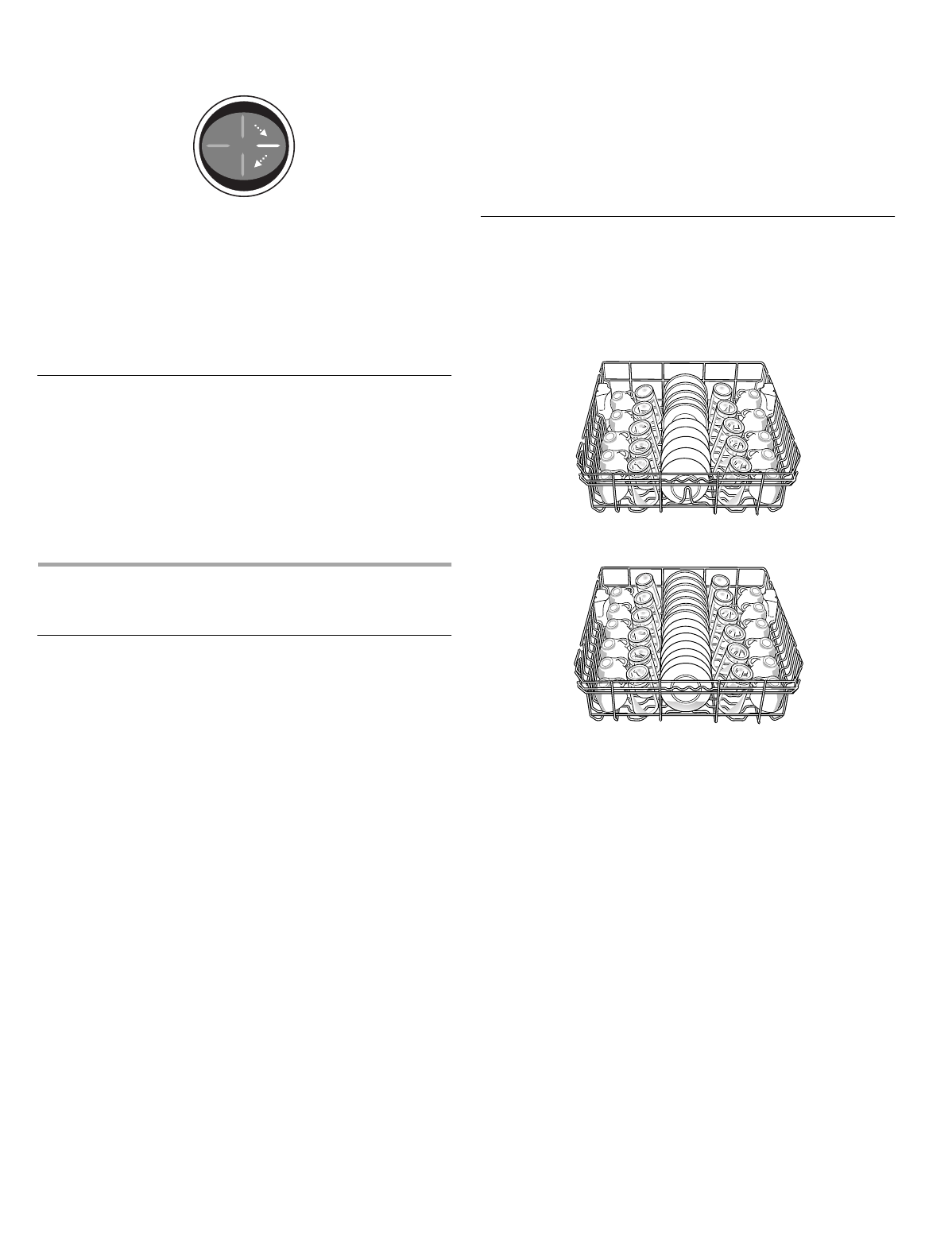
7
IMPORTANT (on some models):
■
When the cycle starts, you will see a rotating pattern of lights
in the display window indicating that the unit is operating.
This pattern will continue for up to 6 minutes while the
multiple sensors check the incoming water temperature, rinse
aid usage and soil level on dishes and cookware. The sensors
then determine the ideal cycle for your dish load. After
sensing is complete, the display will show the number of
minutes left in the cycle and the cycle countdown will begin.
■
The cycle countdown pauses and the water heating light
glows while the dishwasher heats the water to a set
temperature. (See “Cycle Selection Charts.”)
Stopping Your Dishwasher
You can stop your dishwasher anytime during a cycle.
1.
Open the door slightly.
2.
Wait for the spraying action to stop. Then open the door all
the way, if needed.
Close the door to continue the cycle.
OR
Press CANCEL/DRAIN. A 2-minute drain starts.
DISHWASHER LOADING
Loading Suggestions
■
Remove leftover food, bones, toothpicks and other hard
items from the dishes. It is not necessary to rinse the dishes
before putting them into the dishwasher. The wash module
removes food particles from the water. The module contains a
chopping device which will reduce the size of food items.
NOTE:
If hard items such as fruit seeds, nuts, and egg shells
enter the wash module, you might hear chopping, grinding,
crunching, or buzzing sounds. These sounds are normal
when hard items enter the module. Do not let metallic items
(such as pot handle screws) get into the wash module.
Damage can occur.
■
It is important for the water spray to reach all soiled surfaces.
■
Load dishes so they are not stacked or overlapping, if
possible. For best drying, water must be able to drain from all
surfaces.
■
Make sure pot lids and handles, pizza pans, cookie sheets,
etc., do not interfere with the spray arm rotation.
■
Run a rinse cycle to keep dishes moist if you do not plan to
wash them soon. Foods such as eggs, rice, pasta, spinach,
and cooked cereals may be hard to remove if they are left to
dry over a period of time.
Quiet operating tips
To avoid thumping/clattering noises during operation:
■
Make sure lightweight load items are secured in the racks.
■
Make sure pot lids and handles, pizza pans, cookie sheets,
etc., do not touch interior walls or interfere with the rotation of
the spray arm.
■
Load dishes so they do not touch one another.
NOTE:
For built-in models, keep sink drain plugs closed during
dishwasher operation to prevent noise transfer through drains.
Loading Top Rack
The top rack is designed for cups, glasses, and smaller items.
Many items, up to 9 in. (22 cm), fit in the top rack. (See
recommended loading patterns shown.)
NOTE:
The features on your dishwasher rack may vary from the
drawings shown.
■
Place items so open ends face down for cleaning and
draining.
■
Load glasses in top rack only. The bottom rack is not
designed for glasses. Damage can occur.
■
Place cups and glasses in the rows between tines. Placing
them over the tines can lead to breakage and water spots.
■
China, crystal, and other delicate items must not touch each
other during dishwasher operation. Damage may occur.
■
Load lightweight plastic items in the top rack only. Only
plastic items marked “dishwasher safe” are recommended.
■
Load plastic items so the force of the spray does not move
them during the cycle.
■
To avoid chipping, do not let stemware touch other items.
■
Small bowls, pans, and other utensils can be placed in the
top rack. Load bowls in the center section for best stability.
10 place setting
12 place setting



